By Carolina Lees
Health is at the root of all the choices I make. I farm because working outdoors and being surrounded by fresh vegetables keeps me healthy. Spreading the health is the core of my business: I provide my neighbors with delicious, fresh vegetables that are a pleasure to eat. My farming practices center around the health of my soil, my plants, and my ecological and human community.
But I have to admit to a bit of a phobia around hospitals and the non-holistic approach of Western medicine. Health policy debacles and skyrocketing costs have made me a cynic.
So when a CSA member asked me about setting up a produce stand at our local hospital, I have to admit to a little reluctance. I wasn’t sure about aligning myself with this mainstream institution, thinking that their approach to health didn’t line up with mine.
But as I thought about it, I realized they were inviting me there precisely to address those issues. Kimberanne Silbernagel, our CSA member and Director of Primary and Specialty Care Practices at our local hospital, told me, “We felt that access to fresh produce goes along with our mission, and is so beneficial to staff, patients and visitors. I love being able to encourage wellness through availability of fresh local whole foods as well as support a local business that is promoting health in our community.”
We started in July, and as the weeks went by I realized how our farm could help to change the hospital for the better. We could provide healthy food in a convenient setting and advice on how to use it. We could bring colorful, living produce into the institutional setting. We could provide some of the human connection so essential to healing, and support the employees who bear the brunt of that responsibility. I started to feel like a guerilla subverting the paradigm one vegetable at a time, even though it was the hospital administration that had invited me to be there in the first place!
And the hospital helped me as much as I helped them. They arranged a great location and took care of publicizing it to their staff. Most of my customers were hospital employees who appreciated the convenience of stopping by on their lunch break. Even more convenient, the hospital’s payroll department allowed me to deduct directly from employee’s paychecks. As I got to know more of them, I realized how many of my CSA members worked at the hospital. If you live in a small community, I expect that may be true for you as well.
Besides hospital staff, our customers were a mix of patients, community members, and residents at the neighboring retirement community. One of my favorite customers was an elderly lady who had gardened all her life, but now lived in an apartment by the hospital. Darlene came every week with her bags ready to go, including a box to get her tomatoes home unbruised. She would tell me about her old garden and how much she appreciated the fresh produce, and she would often pick up orders for her less-mobile neighbors in the retirement community.
Another group of customers that I hadn’t anticipated were the families and friends of patients. Many of them were responding to a medical emergency. Others were visiting friends with chronic conditions, or accompanying a relative to an appointment. Looking for relief, they would watch me set up, or ask questions about the farm and smell the fresh basil. They didn’t buy much, but sometimes they’d buy a pint of Sungold tomatoes or some carrots to snack on, a departure from the usual cafeteria fare.
These interactions clued me in to the myriad of benefits of farm-hospital connections and got me thinking about their potential. How else could we work together to promote health and increase access to healthy food? How else could hospitals support the vitality of local agriculture and why should they?
Community benefit obligation
Under the Affordable Care Act, non-profit hospitals (about 60% of US hospitals) have an expanded “community benefit obligation” to maintain their non-profit status. Traditionally, this has taken the form of providing free services to low-income patients. But according to a report by The Food Trust in Philadelphia, the increased coverage under the ACA reduced that need and now hospitals are looking at new ways to give back.
In 2014, The IRS determined that hospitals can claim programs ensuring adequate nutrition toward their exemption. Hospitals around the country have embraced the same ideas that Kimberanne did here in Lincoln City, Oregon: that increasing food access aligns with their mission of community benefit.
At the Lankenau Medical Center in Philadelphia, the hospital worked together with local farmers markets to provide “Philly Food Bucks” to eligible low-income patients at routine care appointments. They provided counseling about using fresh food, information about the local farmers markets, and vouchers redeemable at the participating markets.
The hospital sponsored three area farmers markets where they also provided routine health screenings, free health information, and “family-oriented wellness activities.” Hospitals around the country have taken advantage of the open community space of farmers markets to provide screenings and education. According to the Food Trust report, 72% of surveyed shoppers would attend the market more often if they expected regular programming. Hospitals can contribute programming, shopping incentives, and education to help increase attendance at farmers markets and bring in new customers, all while contributing to their own missions.
Farmers markets
Hospitals aren’t just providing programming and community booths at existing farmers markets. I found dozens of examples around the country of farmers markets taking place at hospitals and medical centers. Some are sponsored by the hospitals themselves, like the University of Wisconsin Health markets in Madison, WI. Some, like the Tuality Hospital Farmers Market in Hillsboro, OR are partnerships between farmers market organizations and hospitals.
Kaiser Permanente, a health network serving eight states, has by far the most hospital-run farmers markets. In 2003, a Kaiser doctor was inspired to start a farmers market at their Oakland Medical Center. Kaiser quickly expanded the program and added farmers markets throughout their service area, with over 50 markets and farm stands operating by 2012, both self-operated and in partnerships.
Most hospital farmers markets take place mid-week and mid-day, spanning the lunch hours. While the largest markets mostly take place on weekends, hospitals can be excellent mid-week outlets. Kimberanne told me that she got feedback that people appreciated being able to go to a less crowded market to shop; many of them may have never gone to my busier market booths.
Payroll deduction was key to my success at the hospital stand, and I found examples of other hospitals that offered the same benefit. At my stand, I took names and employee numbers and submitted them weekly to the payroll department. The Tuality Hospital Market has a token system for payroll deduction, similar to how many markets process credit cards and SNAP benefits. Employees can purchase tokens from the market manager to spend at the market, and the cost is deducted directly from their paychecks. This simplifies the process for the farms, the employees, and the administrators.
For the farmer, the hospital can provide a lot of benefits. In addition to a site and customer base, they provide both internal and external public relations. Holding other events concurrently with the farm stand, such as health screenings or raffles, can improve turnout for the farmer and the event. Some hospitals encouraged market attendance through internal promotions, or encouraging their employees and patients to walk to the market to promote physical activity. At one Kaiser market in San Jose, CA, the hospital gave out market vouchers to reward exceptional employees. In some cases, hospital staff dealt with logistics of the market such as permits, trash handling, and vendor coordination.
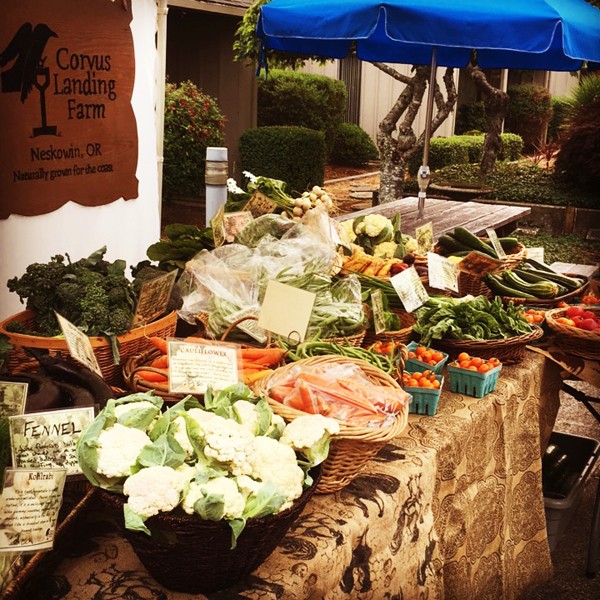
CSA possibilities
Hospitals are a natural location for CSA drops, and chances are that several hospital employees are already members of your CSA. I intend to offer CSA pickup at my stand at the hospital next year, hopefully increasing weekly turnout and sales. I also intend to offer in-hospital delivery, making CSA pickup even more convenient for hospital employees.
Whether or not you plan to offer CSA pickup at your local hospital, you may want to consider marketing your CSA there. I am planning to table at the hospital cafeteria this spring with CSA information and signup forms. If you are part of a larger farmer network, you might consider setting up a collective CSA open house during the off-season. Or ask if any of your members are employees and could send out a notice about signup to the staff. One of them might be inspired to recruit members or coordinate a drop site, maybe in exchange for a discounted share.
In Wisconsin, the FairShare CSA Coalition has pioneered a partnership between CSA farms and health insurance providers. Participating insurers give rebates to members who subscribe to a CSA through the FairShare CSA Coalition, similar to how insurers reimburse gym memberships. The rebate varies, but is around $100 - $200. Between 2005 and 2010, four insurance companies provided 20,400 rebates to members, for a value around $3 million. I love this model, since a CSA is a great way to improve health and reduce health care costs.
According to an analysis in the fall 2011 issue of the Journal of Agriculture, Food Systems, and Community Development, this program was largely successful because of the role of FairShare as an intermediary. They provided quality control and acted as a liaison between the insurance companies and the farmers. As a caveat, some participating farmers were concerned that members attracted through the program were doing it just for the rebate and without a full appreciation for the CSA and its shared risk model. But that also implies that new people were learning about and signing up for CSAs.
Approaching insurance companies is probably only feasible for a farming co-op or CSA coalition, not an individual farmer. But I intend to approach my local hospital about internal reimbursement for employees who buy CSA shares. Our local hospital provides “wellness bucks” for employees to use for things like massage that aren’t covered under their regular insurance. It seems to me that a CSA share would fall into that category, though I don’t know if the hospital will agree.
Vegetable prescriptions
Similar to the “Philly Food Bucks,” several programs around the country have explored using actual prescriptions to encourage people to buy more fresh, local produce. Health care providers provide eligible patients with one-time or monthly vouchers redeemable at participating markets, farm stands, or grocery stores.
Some programs are run by local food advocacy organizations, such as the Gorge Grown Food Network in Hood River, OR. The coalition of farmers and advocates started their program to address food insecurity in their community. They funded the program with foundation grants and contributions from the participating health providers. The program fed 6,500 people in one year and boasted 98% redemption at senior centers, one of the distribution points for the vouchers.
Wholesome Wave is a national non-profit founded to increase access to affordable produce. They have embraced the idea of produce prescriptions and provide a toolkit and consulting for organizations to set them up throughout the country. Program evaluations have shown that participants more than doubled their produce consumption and had positive health outcomes. Affiliated programs are now running in twelve states.
Wholesome Wave has partnered with Target to fund prescription programs in Los Angeles, Houston, and Miami, and their prescription vouchers are redeemable at local farmers markets or at Target stores. Target funded the program and the vast majority of the vouchers went back to their stores, but in their 2016 pilot program in Los Angeles, 2,300 participants spent $96,000 at local farmers markets through the program.
As of this writing, there is a bill in the house (HR 3941) that, if passed, would provide federal funding for vegetable prescription programs and expand this promising idea.
Institutional buying
Hospitals incorporating locally grown produce into their cafeterias is a seemingly obvious collaboration. In a University of California, Davis report on the state of farm-hospital purchasing, the authors say, “Not only can serving local food in patient meals and cafeterias directly improve eating habits, but it can help hospitals take a leadership role in creating food and agricultural systems that foster public and environmental health and social and economic equity.”
There are massive institutional and logistical barriers to hospital purchasing beyond the scope of this article. Few efforts have been successful, as hospitals are in many ways more constrained than other institutions like universities. Most examples that I found involved a farming cooperative or collaborative distributor, a non-profit advocate (like Health Care Without Harm), and somebody inside the hospital who was particularly motivated to get local food into the system.
But one hospital has come up with a creative solution. Started in 2014, the St. Luke’s Rodale Institute Organic Farm in Easton, PA is actually located on the hospital’s campus: farmer Lynn Trizna says that patients can see the 11.5 acre farm through the windows. They grow over 100 varieties of produce for the seven hospital campuses and a mobile grocery market, and this year they will be offering a CSA to hospital employees.
It’s a unique arrangement: the hospital provides the land, funds the operation, and is its primary customer. The Rodale Institute provides a farmer and assistant manager (paid for by the hospital), who are in charge of all labor and growing decisions. Rodale also works with the hospital’s food service provider to figure out what to grow, and Lynn stays in regular contact with them as well. The hospital has dramatically changed its cafeteria offerings to incorporate fresh produce from their farm. This is an inspirational model that couldn’t happen without buy-in from everyone involved.
Other examples
The above examples are the most widely adapted and successful farm-hospital collaborations that I could find in my research. But I encountered a few other ideas that are worth mentioning:
Hospital gardens have sprouted up in a few locations. In fact, Kimberanne’s original idea was to have a garden at our local hospital but it proved too complicated. I found examples of community gardens on hospital grounds, gardens that provided for the hospital, and gardens for employees to use. A hospital garden could be therapeutic, educational and practical, given the right staff and setup.
Designated shoppers were used at a couple of California markets. I saw one example where a hospital staffer took orders from their coworkers and shopped for folks who couldn’t get away. A market at a hospital in a low-income area of Los Angeles created its own CSA-style program. A staffer from the farmers market association would buy bulk produce from the vendors during the market and fill subscription boxes for workers at a nearby company. One of the farmers at the market said it made it worth it for him to attend and allowed the market to exist in a spot that otherwise might not have been successful. As far as I could tell, this program was discontinued.
That’s My Farmer is a grant-funded program at my local Samaritan hospital network. Cancer survivors register to learn about healthy eating and fresh produce. They attend weekly classes, where they receive a small CSA share or vouchers for the local farmers market. Educators provide recipes, highlight different seasonal items each week, and give participants tools to develop healthier habits.
Health starts in the soil and water, moves up the food chain through plants and animals, through our bodies, and into our economies and society. The diverse examples of farms and hospitals working together to address health on all of those levels have left me feeling inspired. Hopefully you are too, and you will benefit from incorporating your local hospital into your marketing plan.
Carolina Lees started Corvus Landing Farm in 2010 at the Oregon coast. She and her crew farm two acres of vegetables, providing for the small communities surrounding the farm through farmers markets and a 60-member CSA.

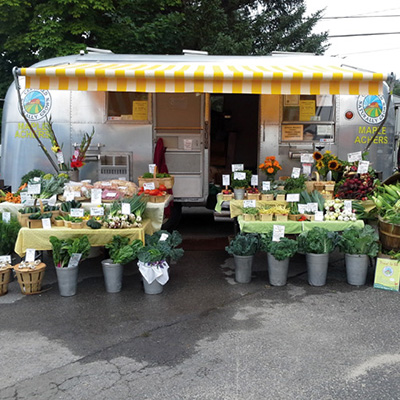

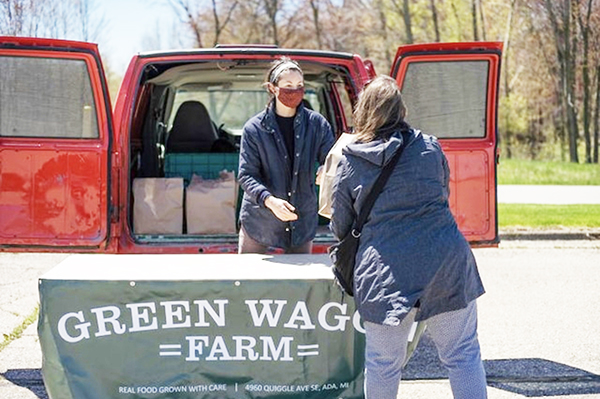 In the June/July magazine, our cover story talked about how REKO rings are a new way to sell to your local community through a closed Facebook group.
In the June/July magazine, our cover story talked about how REKO rings are a new way to sell to your local community through a closed Facebook group.


 In an extraordinary career, Gus Schumacher was instrumental in harnessing government programs and public budgets to accelerate participation of low-income people at farmers markets as customers, helping them access the health benefits that go along with eating fresh foods. Where public programs fell short, Gus joined with others to find ways to supplement them by mobilizing charity and the nonprofit sector to broaden the range of people shopping at farmers markets.
In an extraordinary career, Gus Schumacher was instrumental in harnessing government programs and public budgets to accelerate participation of low-income people at farmers markets as customers, helping them access the health benefits that go along with eating fresh foods. Where public programs fell short, Gus joined with others to find ways to supplement them by mobilizing charity and the nonprofit sector to broaden the range of people shopping at farmers markets. 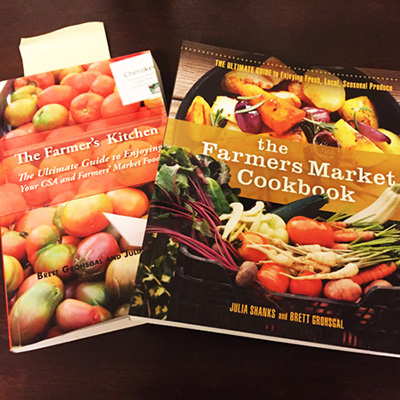
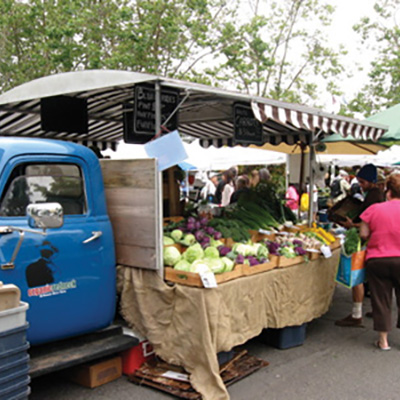
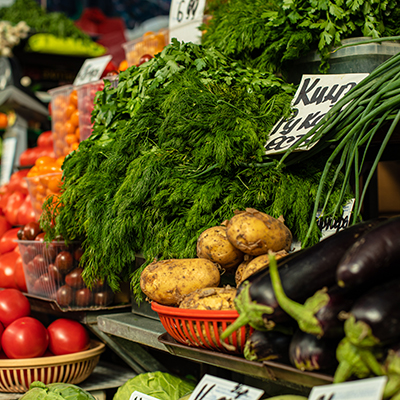
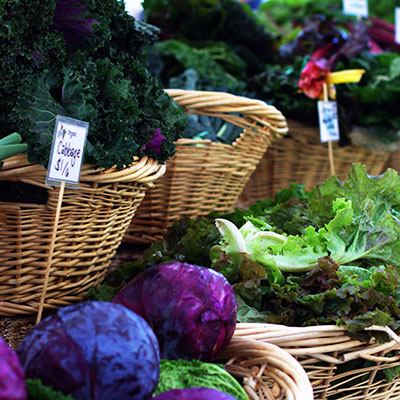

 Weddings are a huge opportunity for local flower farmers, especially with the growing awareness of and demand for seasonal, sustainable flowers. And, if there is one time that people really want special flowers, it’s at their weddings.
Weddings are a huge opportunity for local flower farmers, especially with the growing awareness of and demand for seasonal, sustainable flowers. And, if there is one time that people really want special flowers, it’s at their weddings.


 For most established growers, the easiest place to start selling flowers will be mixed bouquets and single stem/small bunch retail sales. These are the flowers you can sell to your existing customers and they are easy to incorporate into farmers market, CSA, and grocery sales. But there are lots of other outlets out there, including florists, weddings and events, business subscriptions, value added products, and wholesalers.
For most established growers, the easiest place to start selling flowers will be mixed bouquets and single stem/small bunch retail sales. These are the flowers you can sell to your existing customers and they are easy to incorporate into farmers market, CSA, and grocery sales. But there are lots of other outlets out there, including florists, weddings and events, business subscriptions, value added products, and wholesalers.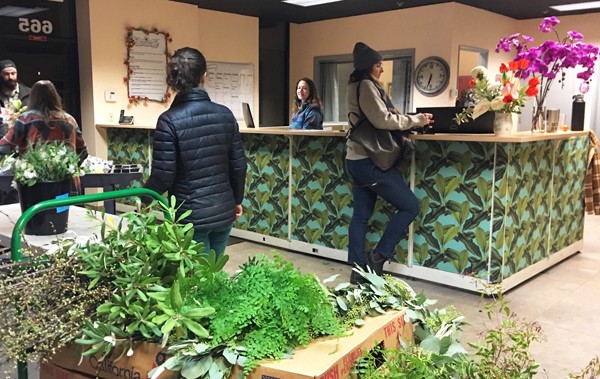 It takes courage to farm, no way around it and no matter what you farm. If you are trying to pull a living from working the land, you learn to live with risk on a daily basis, in a way that earning a regular paycheck won’t teach.
It takes courage to farm, no way around it and no matter what you farm. If you are trying to pull a living from working the land, you learn to live with risk on a daily basis, in a way that earning a regular paycheck won’t teach.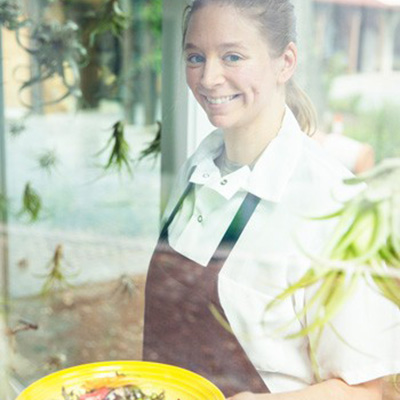
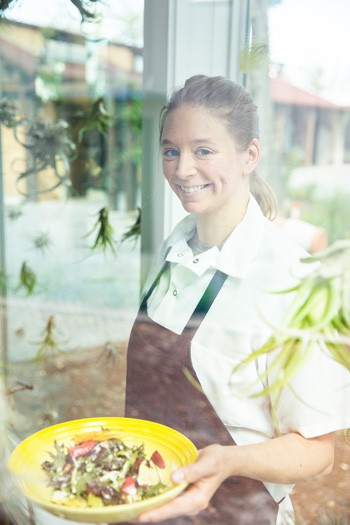 Our farm business has always centered primarily around our CSA, with a little bit of market and restaurant sales. However, for 2018 we wanted to expand our outlets to increase our income. And for me, selling more food to chefs was the obvious direction to go.
Our farm business has always centered primarily around our CSA, with a little bit of market and restaurant sales. However, for 2018 we wanted to expand our outlets to increase our income. And for me, selling more food to chefs was the obvious direction to go.